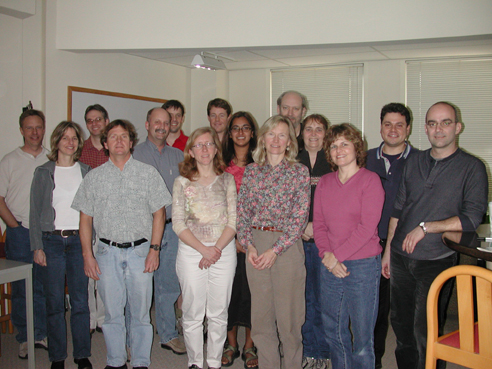NCEAS Working Groups
Narrowing the gap between theory and practice in mycorrhizal management
Project Description
Research on interactions between plants and their symbiotic mycorrhizal fungi has increased dramatically during the last decade, generating a confusing body of theoretical and empirical results. Simultaneously, there has been an explosion in commercial applications of mycorrhizal fungi in agriculture, horticulture, forestry and ecosystem restoration. Considering the unexpected consequences of many human introductions of non-native plants and animals, and our current lack of understanding of the factors controlling mutualistic performance of mycorrhizas, it is alarming that so little caution is being used in commercial applications of mycorrhizal fungi. Our proposed working group will: 1) perform meta-analyses to synthesize the currently disparate body of empirical and theoretical work on mycorrhizal function within communities and ecosystems, 2) develop models of mycorrhizal performance with environmental conditions and plant and fungal phenotypes as variables, 3) generate recommendations and precautions regarding the commercial use of mycorrhizal inoculum, 4) establish an online database that documents inoculation trials and tracks their outcome over time, and 5) organize a symposium at an international conference. In addition to contributing to the development of principles to guide mycorrhizal management, our efforts will help generate better theories for understanding the roles of mutualisms in population and community dynamics.

Principal Investigator(s)
Jason D. Hoeksema, Nancy C. Johnson, James A. Umbanhowar
Project Dates
Start: January 1, 2005
End: July 31, 2006
completed
Participants
- Lynette K. Abbott
- University of Western Australia
- Michael Amaranthus
- Mycorrhizal Applications, Inc.
- James D. Bever
- Indiana University
- Bala Chaudhary
- Northern Arizona University
- Catherine Gehring
- Northern Arizona University
- Jason D. Hoeksema
- University of California, Santa Cruz
- Nancy C. Johnson
- Northern Arizona University
- John N. Klironomos
- University of Guelph
- Roger Koide
- Pennsylvania State University
- R. Michael Miller
- Argonne National Laboratory
- John C. Moore
- University of Northern Colorado
- Peter Moutoglis
- Premier Tech Biotechnologies
- Chris Picone
- Mount Holyoke College
- Anne Pringle
- Harvard University
- Mark W. Schwartz
- University of California, Davis
- Suzanne Simard
- University of British Columbia
- William Swenson
- University of California, Riverside
- James A. Umbanhowar
- University of Guelph
- Lawrence Walters
- Northern Arizona University
- Gail W. Wilson
- Kansas State University
- Catherine Zabinski
- Montana State University
Products
-
Dissertation or Thesis / 2006
Functions of arbuscular mycorrhizal fungi at ecosystem and community scales in semi-arid shrublands
-
Presentations / 2006
It's a dryworld afterall: Functional ecology of arid ecosystems
-
Data Set / 2006
MycoDB: Database for meta-analyses of mycorrhizal inoculation
-
Dissertation or Thesis / 2009
Structure and function of arbuscular mycorrhizal fungal communities across several spatial scales
-
Journal Article / 2010
Advancing synthetic ecology: A data management technique to facilitate complex ecological meta-analyses
-
Presentations / 2009
Context-dependency in plant response to mycorrhizal fungi: A meta-analysis
-
Journal Article / 2010
A meta-analysis of context-dependency in plant response to inoculation with mycorrhizal fungi
-
Journal Article / 2018
Evolutionary history of plant hosts and fungal symbionts predicts the strength of mycorrhizal mutualism
-
Presentations / 2005
Managing indigenous AMF. Ecological risks associated with introduction of commercial inocula around the world
-
Journal Article / 2006
From Lilliput to Brobdingnag: Extending models of mycorrhizal function across scales
-
Journal Article / 2009
Mysterious mycorrhizae? A field trip and classroom experiment to demystify the symbioses formed between plants and fungi
-
Journal Article / 2004
Detritus, trophic dynamics and biodiversity
-
Journal Article / 2006
The promise and the potential consequences of the global transport of mycorrhizal fungal inoculum
